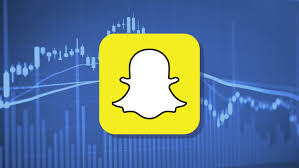The Snapchat IPO Just Got a Lot Cheaper

Rumors of the Snapchat IPO valuation have been, well, at least somewhat, exaggerated.
Two weeks ago, when Snapchat’s parent company Snap Inc. first filed its IPO prospectus, we wrote about how insanely expensive Snap’s stock was likely to be. On Thursday, however, Snap updated its IPO filing with a proposed stock price for when it goes public in March (under stock symbol “SNAP”), and it’s not quite as high as had been widely expected.
Snap now hopes to price its stock at $ 14 to $ 16 per share, valuing the company at about $ 22 billion at the high end, but at $ 19 billion on the low end. That’s as much as 24% less than the $ 25 billion valuation for which Snap was reportedly aiming, which was also the Snapchat company’s private-market valuation as of its latest funding round.
And that means that Snap’s future shareholders won’t be taking quite as much risk by buying into the maker of the disappearing message app, which lost $ 515 million at its bottom line last year. At a valuation of $ 19 billion, Snap stock would trade at 47 times sales, not quite as sky high as the price-to-sales ratio of 62 that we previously computed. (Though if Snap prices at the high end of its range at $ 16 per share, giving it a valuation of around $ 22 billion, it would trade at almost 54 times sales.)
While Snap’s IPO will by no means be cheap, that more conservative price-to-sales valuation puts it in line with Twitter (twtr) when that social media company went public. Twitter’s shares debuted at about 45 times the company’s sales.
Of course, Snap can still raise the price of its stock offering before it goes public. Snap has already raised the ceiling on the amount it plans to raise in the IPO, from $ 3 billion in its first filing to $ 3.68 billion in its latest one.
What’s more, Snap’s proposed valuation could be the Snapchat founders’ way of drawing more prospective investors in by allaying any squeamishness over too rich a price, while also setting the stage for the company to increase it after its IPO road show, as Fortune’s Erin Griffith points out. Such a move would give the impression of bursting demand for Snap stock, which would help the company’s founders justify an even higher valuation later on.
But that maneuver also comes with a history of cautionary tales, most notably that of Facebook (fb). When Facebook went public in 2012, it originally set a share price range of $ 28 to $ 35, but then upped it to $ 38 the night before the stock began trading. Facebook’s stock opened on the public markets at $ 42 per share, but in a disastrous twist, closed its first day back down at its initial $ 38 price. It would be more than a year before Facebook’s stock price would see that level again: Just two weeks after its IPO, Facebook shares had fallen even below the low end of its first proposed range.
Still, Facebook, even after it increased the price, wasn’t asking quite as much of its IPO investors as Snap plans to do. Facebook priced its IPO stock at 28 times sales, as much as 40% lower than the price-to-sales ratio Snap is proposing.
Nor would Snap wish for a journey like Twitter’s, despite going public at a similar valuation. Twitter stock dropped below its $ 26-a-share IPO price less than two years after going public in 2013. Today, Twitter shares trade at less than $ 17.
